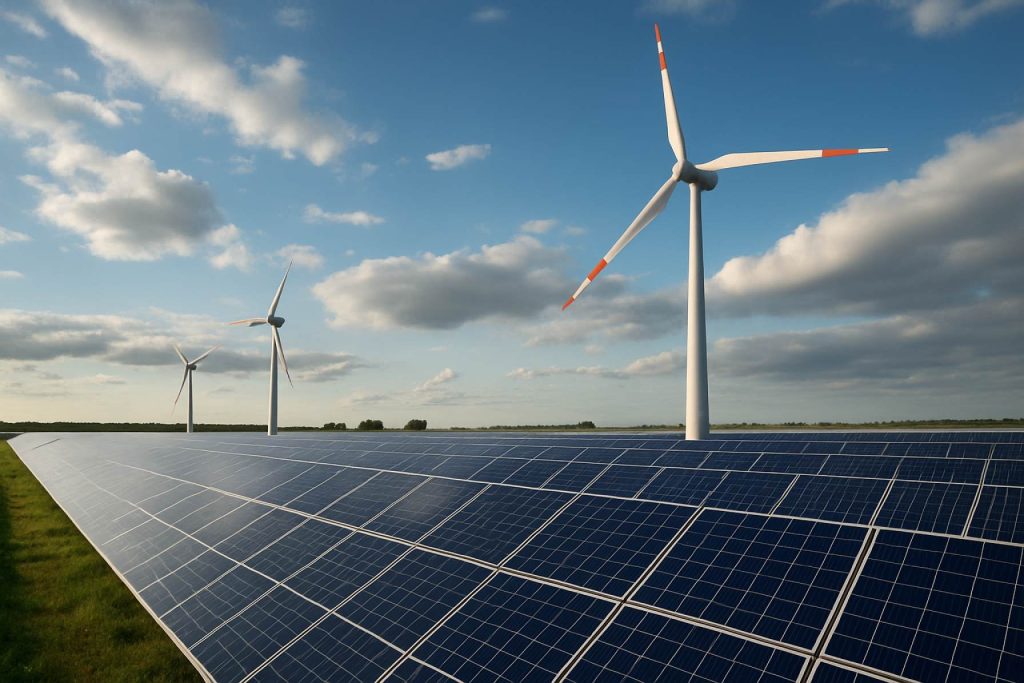
Eastern Europe’s $150 Billion Power Gamble: Digital Innovation Could Cut Energy Bills by 80% and Emissions by 70% by 2030
UNECE’s latest study reveals a bold blueprint for digital-led clean energy transformation across Europe and Central Asia.
- $150B — Estimated investment needed in the region’s energy system by 2030
- 70% — Potential reduction in carbon emissions with digitalization and renewables
- 80% — Possible cut in energy costs through full system optimization
- 60% — Share of current energy mix from natural gas and coal
The future of energy in South-Eastern and Eastern Europe, the Caucasus, and Central Asia is being reimagined. A radical new UNECE study unveils how a $150 billion overhaul—driven by cutting-edge digital technology and clean power—could transform some of the world’s most fossil-fuel-dependent regions. And experts believe the stakes for climate action, public health, and economic growth have never been higher.
Imagine a landscape where ancient power plants give way to AI-driven grids, Virtual Power Plants, and agile, cybersecure systems fueled by innovation. According to the UNECE’s 2025 report, digitalization from the ground up can slash carbon emissions by up to 70% and drive energy bills down by as much as 80%. The recommendations target countries like Albania, Belarus, Georgia, Kyrgyzstan, North Macedonia, Moldova, and Ukraine—where coal and imported fossil fuels still dominate the energy mix.
Why Is Digitalization a Game Changer for Energy?
Digital tech is reshaping how energy is generated, stored, distributed, and used. Innovations like Artificial Intelligence, the Internet of Things, and Digital Twins let power grids respond instantly to supply and demand, optimize efficiency, and improve reliability—even as more renewables come online.
Virtual Power Plants, where many small power sources work as one, turn every rooftop solar panel and every EV charger into part of the solution. At the same time, blockchain and IoT help make energy trading seamless and secure.
Want to learn more about trends in digital energy? Check the resources at International Energy Agency and United Nations Economic Commission for Europe.
What Are the Biggest Barriers to Modernization?
Despite the hype, reality bites hard for legacy energy systems. Most power plants and transmission lines across these regions are decades old. For example:
- In Belarus, over 60% of thermal plants have hit or passed the 30-year mark, racking up huge maintenance costs.
- Georgia’s grid dates back more than three decades, with 12% of energy lost during transmission.
- Many countries face energy security risks—Moldova imports 70% of its electricity; Belarus relies on Russian gas for half its needs.
- Financial constraints are severe: Albania needs $300 million for clean projects, but funds are scarce. In Belarus, only 5% of planned renewables investments are funded.
- Skills shortages are rampant—30% of energy workers in Georgia lack formal renewable energy training.
- Health and climate effects are serious: Belarus’ energy sector pumps out 8 million tonnes of CO2 a year; North Macedonia’s coal dependency fuels some of Europe’s worst urban air pollution.
The situation demands an urgent, coordinated push for new investment, cross-border partnerships, and aggressive policy support.
How Can These Regions Leap into the Future?
The UNECE’s roadmap points to three priority action areas for a green, digital energy transition:
- Energy Efficiency Upgrades: Retrofitting old power systems with smart meters, remote sensors, and automation for real-time efficiency.
- Hybrid Models: Blending gas with hydrogen and other clean sources to hasten coal’s demise while keeping grids reliable.
- Smart Grids & Regional Integration: Building cross-border infrastructure—such as the Trans-Caspian HVDC projects—to enable energy trading and digital connectivity at scale.
Crucially, success calls for a human-centered approach that invests in professional training, fosters research and innovation, and protects vulnerable communities to ensure nobody is left behind.
Q&A: What Does an Optimized Energy Future Look Like?
Q: Will digitalization mean job losses in the traditional energy sector?
A: Although certain roles may change, the sector will see surging demand for IT-savvy engineers, grid operators, and digital specialists. With the right training, the transition can unlock new, higher-skilled employment.
Q: How will this benefit everyday households?
A: Families can expect lower utility bills, fewer power outages, and cleaner air as fossil fuels phase out, thanks to smarter supply-demand balancing and less waste.
Q: What role do international partnerships play?
A: Collaboration—across borders and public/private sectors—is vital for securing funds, standardizing systems, and protecting grids from cyberthreats.
For more insights and actionable recommendations, visit World Bank and UNDP.
How-To: Accelerate Your Country’s Clean Energy Shift
If you’re a policymaker, investor, or industry expert in Eastern Europe or Central Asia, UNECE’s 2025 blueprint suggests:
- Prioritize digital training for energy sector workers
- Unlock new finance channels for green infrastructure
- Modernize legislation to encourage cross-border energy projects
- Champion ethical digital innovation for equitable energy access
- Invest in resilient, cybersecure grids
Now’s the Time to Act—Shape Tomorrow’s Energy Systems Today!
- Assess your grid’s digital readiness
- Promote public-private collaboration for faster deployment
- Scale up regional energy efficiency programs
- Invest in future-proof skills and climate-smart research
- Put people and sustainability at the heart of every investment



